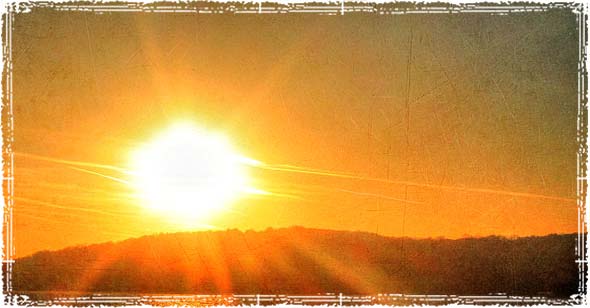Hikers definitely know the importance of monitoring the weather, but all too often ignore one of the biggest weather related killers out on the trail: HEAT.
Heat is not only be uncomfortable, but it can be a real threat to your health while out on the trail. Avoiding heat related problems and illness should always be in your mind anytime you’re out in the wilderness.
Early treatment is the key to making sure that your problems don’t become life threatening.

The first sign of trouble may be Heat Cramps
Hikers often ignore minor aches and pains, but when hiking in hot weather heat related problems usually start with heat cramps. Heat cramps usually come on pretty quickly, and will usually affect your legs and arms first.
Treatment:
The best way to prevent problems while out on the trail is to prehydrate before your hike, and then drink plenty of fluids throughout the day. Once you start experiencing problems:
- Look for a shady spot to get out of the sun.
- If water is nearby, get in. You can lower your core body temperature by immersing yourself in cold water; it’s one of the quickest ways to cool down and help with recovery.
- Drink some water with a pinch of salt, or drink something with electrolytes like Gatorade. Electrolyte-enhanced drinks can be extremely helpful in reversing heat related problems.
Preventing Heat Exhaustion While Hiking
Heat exhaustion is nothing to mess around with, as it can quickly turn into a life threatening condition. Symptoms of heat exhaustion include dizziness, nausea, fatigue, headaches, clammy skin, and a fast pulse.
Prevention:
- Drink plenty of water: Hiking in hot and humid weather can cause your body to lose 1 quart of perspiration per hour.
- Take breaks and try to stay as shaded as possible. Look for routes that are well-shaded and protected from direct sunlight.
- Avoid extended periods of sun exposure, and try not to hike in direct sunlight during the hours of 10 am and 4 pm — this is usually when the sun is at its hottest.
- Wear lightweight, light-colored, loose-fitting clothing and hats. Also look for fabrics that help your body cool properly.
- Monitor your urine. If you’re properly hydrated, you should be urinating frequently and your urine should be clear in color. If your urine is not clear, you need to start drinking more; you are already beginning to dehydrate.
Treatment:
The first line of treatment for heat exhaustion is to immediately get out of the sun and find a cool place to lower your body temperature.
- Get out of the sun and move into a cool place immediately.
- Rest in a shady area, and don’t try to overdo it. Stay put until you start to feel normal again, and then take things slow.
- Drink plenty of cool water. Staying hydrated is the key to your recovery.
- A cool rag, or wet bandanna wrapped around your neck can help cool down your blood.
- If you can find a stream or cool source of water, get in it and lay down.
Heat Exhaustion can quickly turn into heat stroke, which can be deadly. If your condition doesn’t get better, or you start to feel worse, seek emergency medical attention as soon as possible.




Be the first to comment